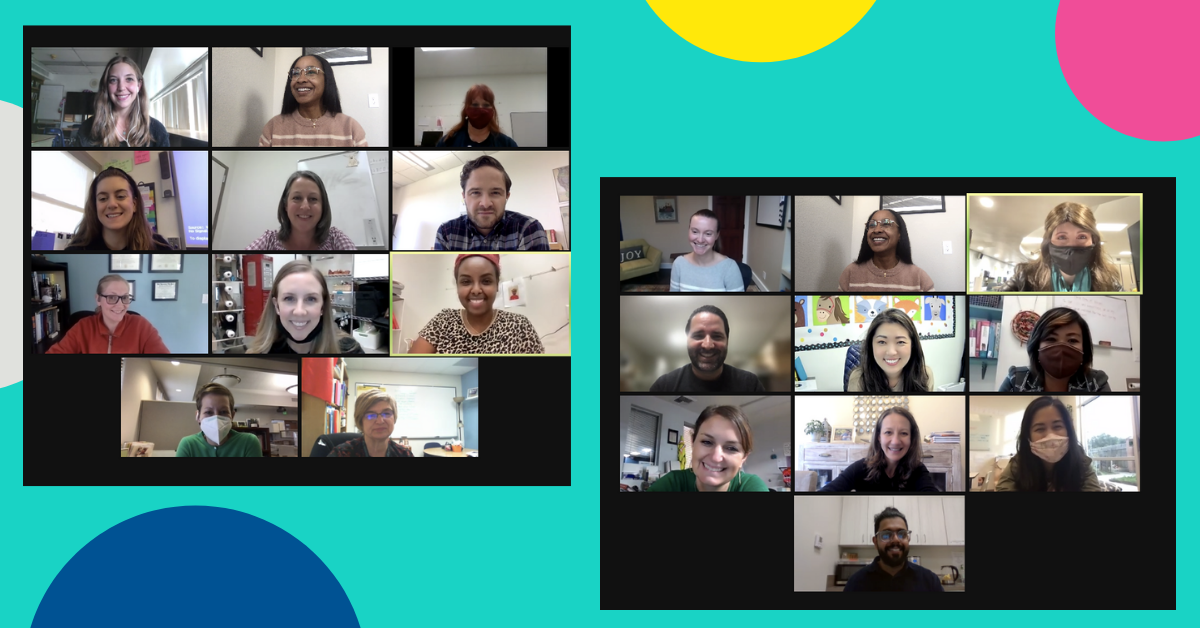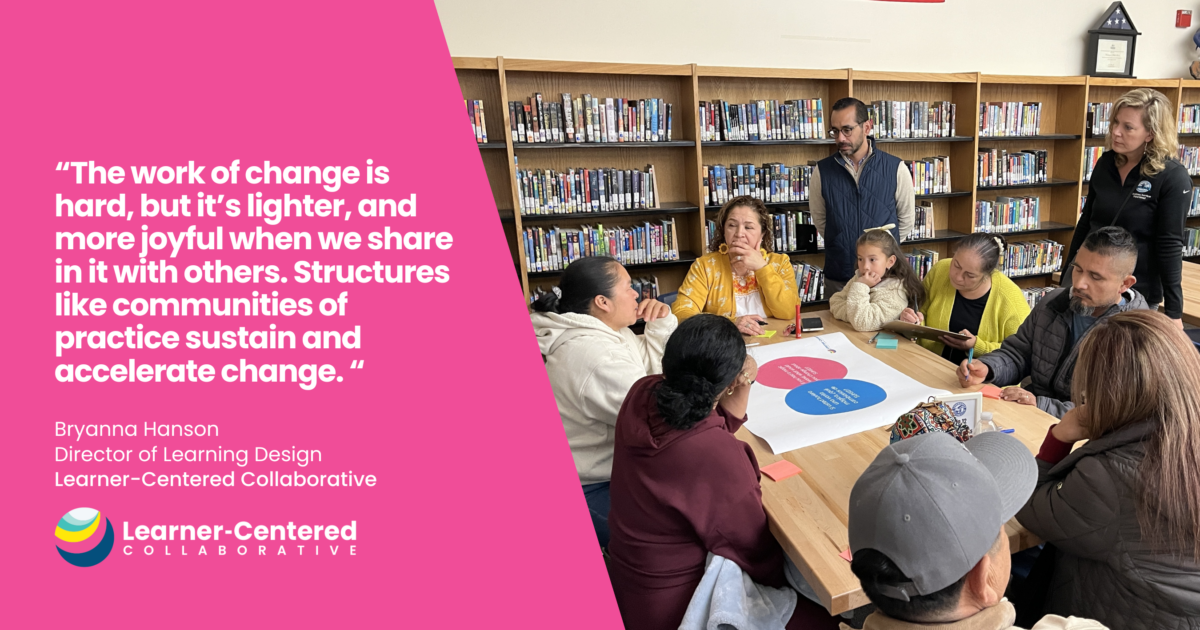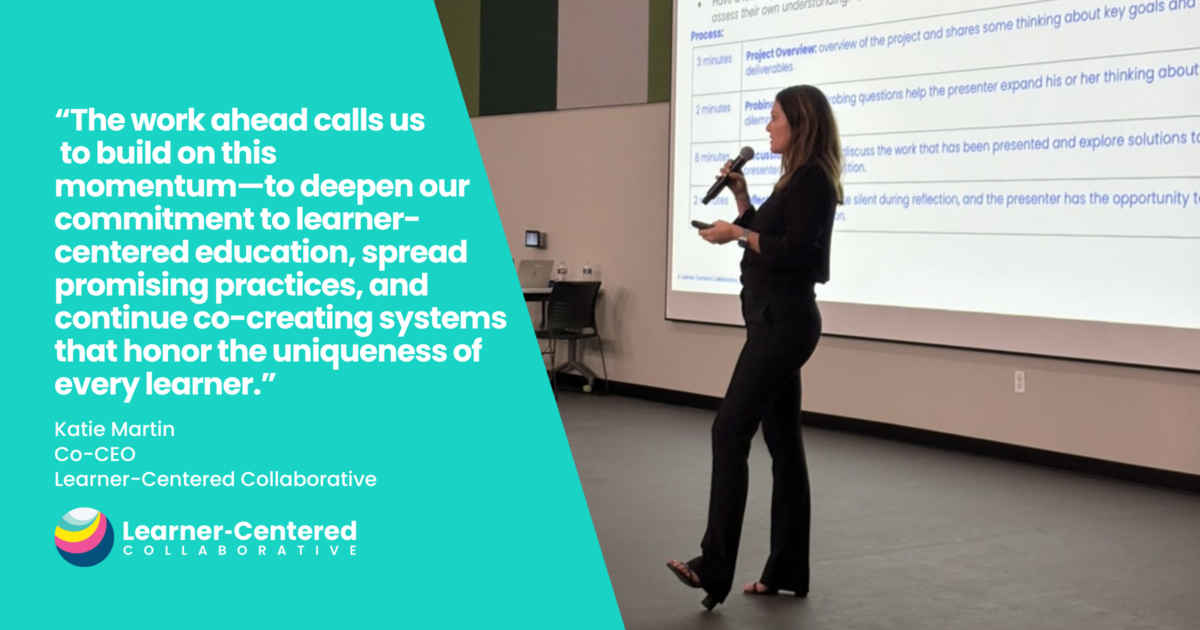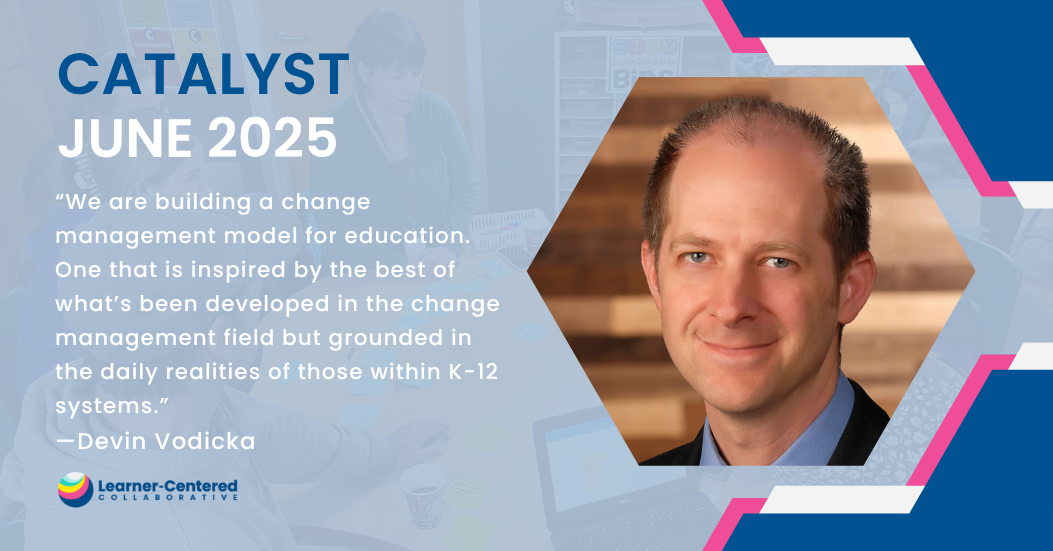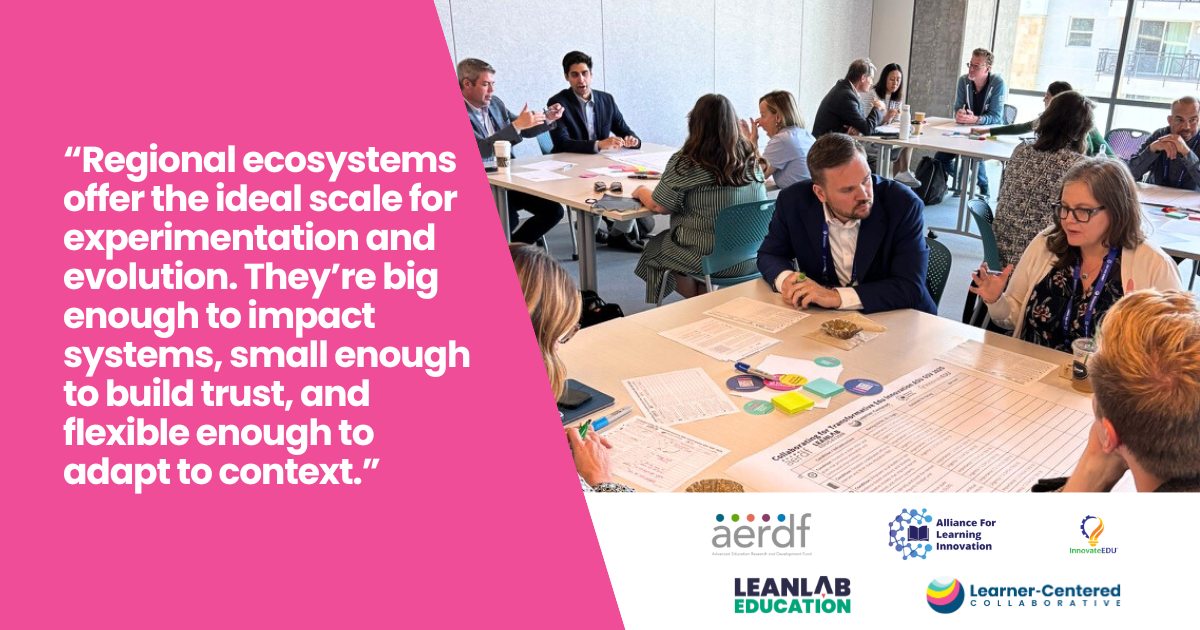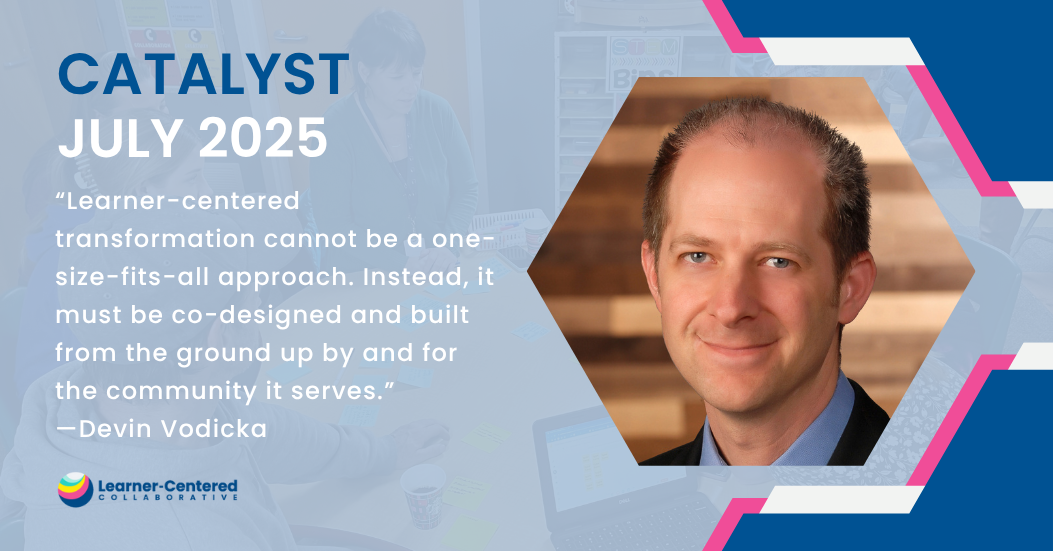Scaling Learner-Centered Innovation: It Takes a Community (of Practice)
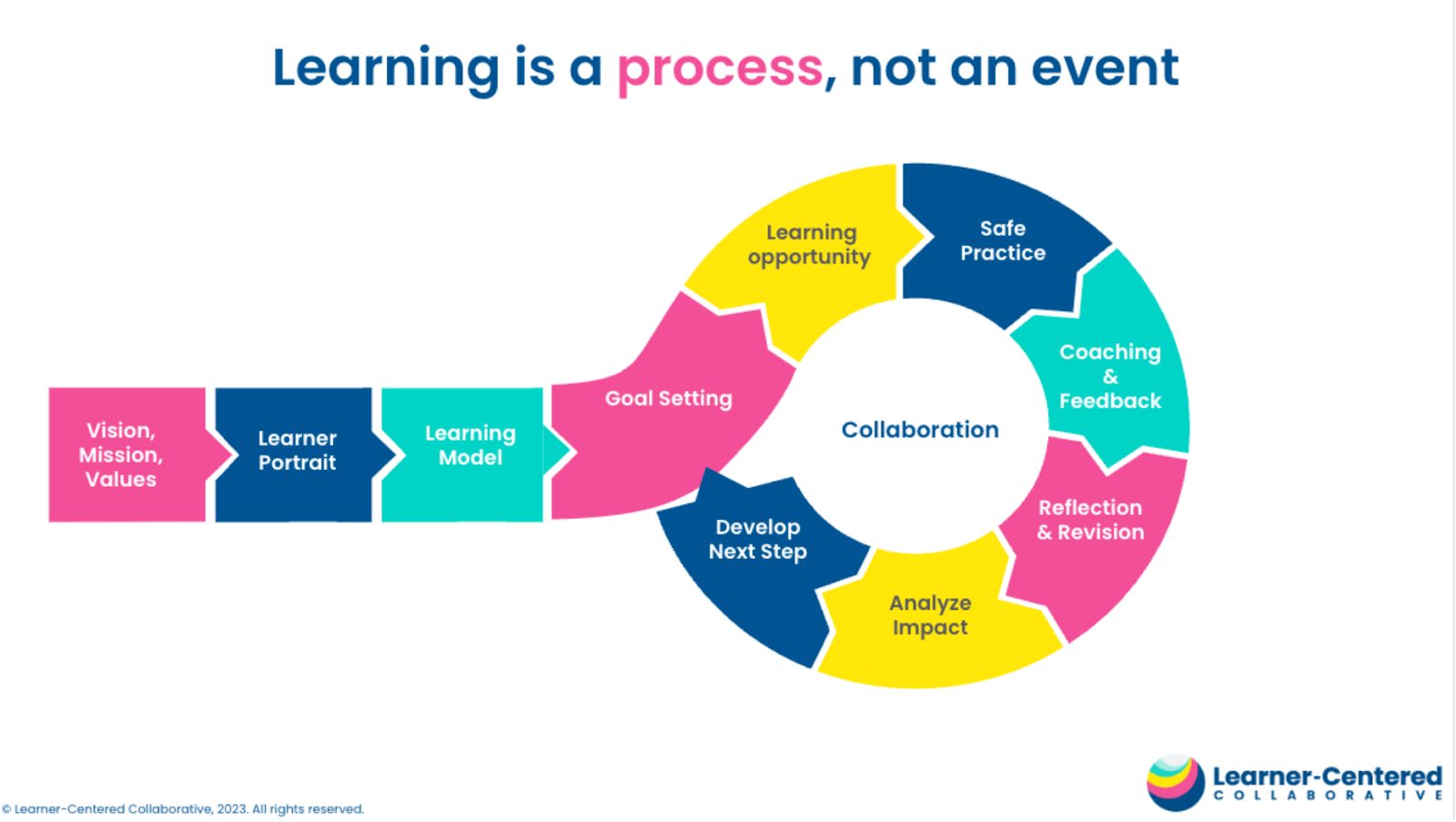
The traditional model of professional development in education has long been an 8-hour, sit-and-get experience, with educators and leaders expected to implement new strategies on their own afterward. Without ongoing coaching or support, many struggle to apply what they’ve learned in a meaningful way. As a result, the changes intended by these one-day workshops often fail to take root, leaving teachers and leaders frustrated and uncertain about how to navigate their learner-centered shift.
To foster sustainable, learner-centered change, educators and leaders need more than just isolated professional development events—they need collaborative, continuous support systems. This is where Communities of Practice (CoPs) come into play, offering a dynamic solution for implementing and scaling learner-centered models at the classroom, grade-level, school and district levels.
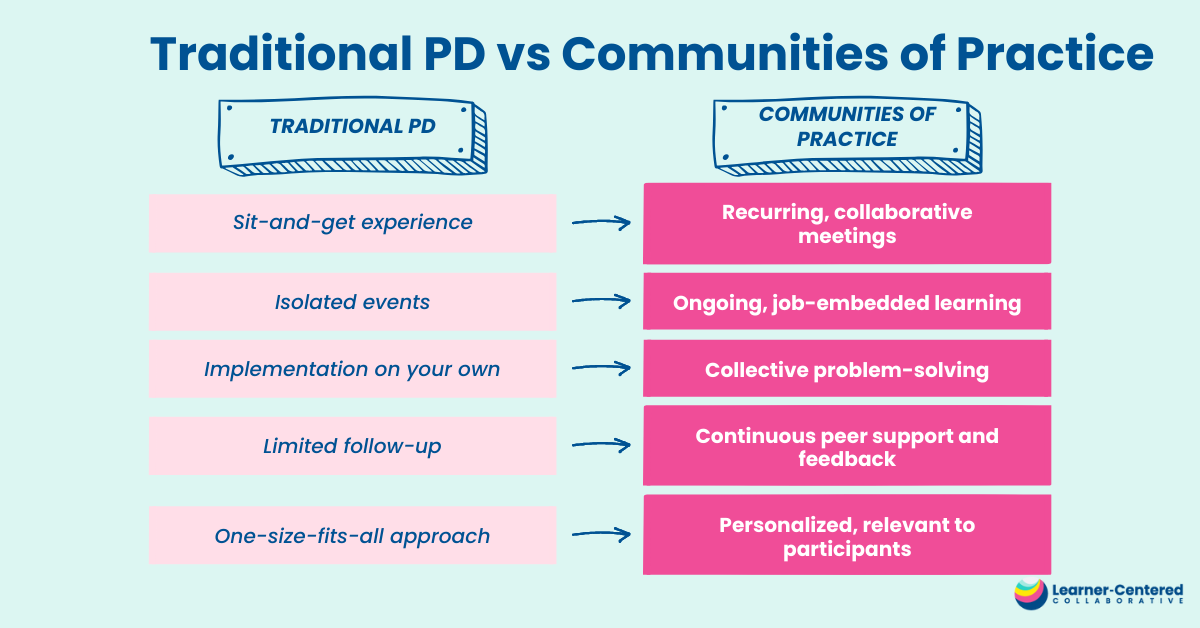
What Are Communities of Practice?
A Community of Practice is a group with a common interest and a commitment to learning and improving together over time.
In the context of education, CoPs are spaces where educators, leaders, and other stakeholders come together regularly to exchange ideas, solve problems, and build knowledge through shared experiences. These communities create a safe environment for exploring new methods, offering peer support, and collectively tackling the challenges that arise when shifting towards learner-centered models.
The strength of CoPs lies in their organic nature—members choose to participate because they share a genuine interest in improving their practice. They are a safe space to celebrate wins and failures, with the group collectively learning from any attempts that didn’t go as intended. CoPs model a learner-centered approach, creating meaningful collaboration and equity of voice through protocols and dedicated time for reflection and sharing about the learning. These communities are built on trust, shared values, and the understanding that the collective wisdom of the group will lead to more meaningful, scalable change.
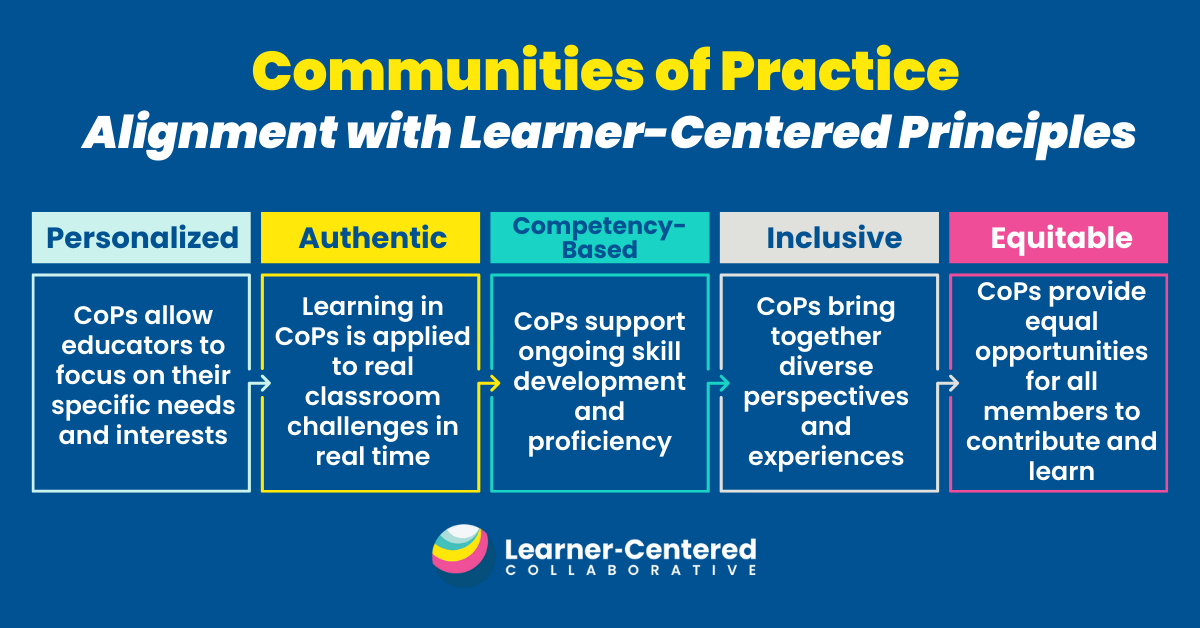
Why Communities of Practice Are Key for Learner-Centered Change
Shifting to a learner-centered model is no small feat. It requires fundamental changes in how we view teaching, learning, and the roles of educators and students. A community-based approach to change can provide the structure and ongoing support necessary for success. Here’s how CoPs can be transformative:
- Shared Vision and Purpose: CoPs align individuals around a common goal aligned to those of their school or district. When teachers and leaders are working towards the same learner-centered outcomes, they are more likely to feel connected and motivated to push through the challenges that arise during the implementation of new strategies (Lindvall & Ryve, 2019).
- Building Connections Across Systems: Implementing learner-centered practices can feel lonely and isolating, especially for educators and leaders who may be the only ones pushing for change in their environment. CoPs create opportunities to connect with like-minded professionals across the country. Networking in this way allows participants to draw on a broader pool of experiences, ideas, and solutions—connections that might otherwise not be possible.
- Collective Problem-Solving: Transitioning to learner-centered models involves unique challenges—from navigating assessment approaches or policies to leveraging student agency in meaningful ways. A CoP provides a safe space where educators can bring real challenges to the table and collectively brainstorm solutions, ensuring that no one feels isolated in their journey.
- Sustained Professional Growth: Traditional professional development often fails to lead to long-term change because it’s disconnected from daily practice. CoPs, on the other hand, offer sustained, job-embedded professional growth. Educators have the opportunity to continually learn, reflect, and refine their practices within a community of peers (Trust & Horrocks, 2017).
- Scaling Impact: Learner-centered approaches must go beyond individual classrooms to impact entire schools and districts. When district leaders and school administrators participate in CoPs, they’re better equipped to align policies, resources, and supports to the needs of their teachers and students, helping to scale change across the system.
Communities of Practice for Educators
Educators are at the heart of learner-centered change. However, transforming instructional practices can be daunting, especially in traditional school structures. CoPs designed specifically for teachers offer a powerful way to build educator agency and capacity.
For example, in western Pennsylvania, educators from four districts near Pittsburgh formed a learner-centered Community of Practice as part of their Innovation Cohort. Each educator identified a new instructional approach to try in their classroom before each CoP. The group met virtually three times to discuss successes, challenges, and insights from their classrooms. Teachers shared student work, provided feedback to each other, and co-created solutions to common barriers, such as managing time and resources. By collectively reflecting, they fine-tuned their approaches in an effort to ensure learning is personalized, authentic, competency-based, inclusive, and equitable for every student.
The power of CoPs for educators lies in the ongoing, job-embedded nature of the learning. Rather than feeling overwhelmed by a one-day workshop, teachers have the opportunity to integrate new strategies, reflect on them, and receive feedback from peers over time.
Learn more about Innovation Cohorts here.
Communities of Practice for School and District Leaders
While educators are key to making the learner-centered shift, school and district leaders play a critical role in creating the conditions for change. We heard from our network of partner schools and districts that it can feel isolating to do this work alone. Leaders need support in shifting policies, reallocating resources, and fostering a culture that embraces learner-centered practices. CoPs for school and district leaders can provide the collaborative space necessary for this work.
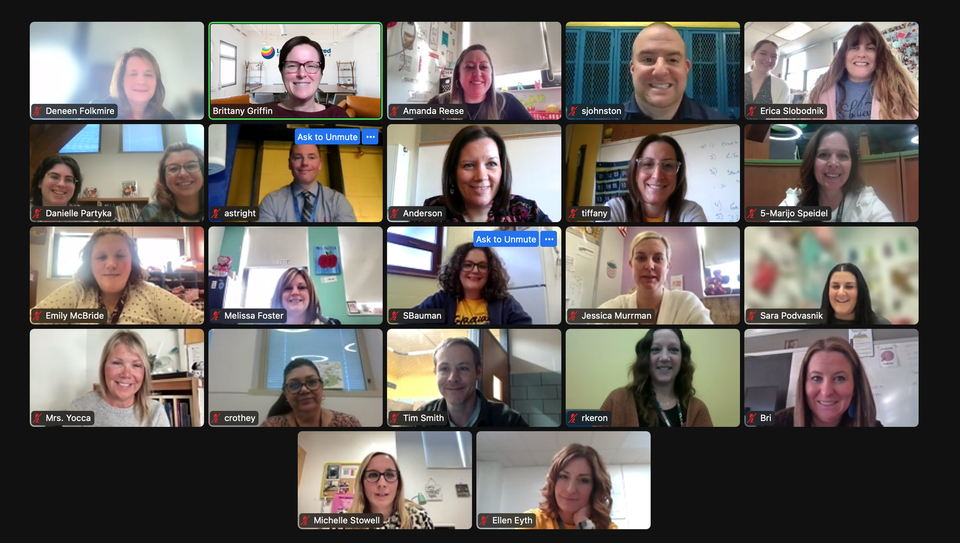
For instance, Learner-Centered Collaborative hosts a monthly 1-hour virtual CoP for all school or district leaders in our partner network to collaboratively align policies and practices to support learner-centered models. We explore ways to create the conditions to support learner-centered education. Topics include bringing your Framework for the Future to life, Scorecards, school schedule redesign, and leveraging design teams to scale change. Leaders often face system-level challenges, such as navigating state accountability systems that don’t always align with learner-centered approaches. By leveraging the collective knowledge of the group, leaders can strategize how to navigate these roadblocks and create a more conducive environment for innovation.
Interested in becoming a partner school or district, click here
Conclusion
Communities of Practice are a powerful, adaptable tool for fostering and scaling learner-centered change in education. By bringing together educators, school leaders, and district administrators in collaborative spaces focused on shared goals, CoPs can support the development of new practices, tackle challenges collectively, and promote sustained growth. Whether it’s a group of educators trying learner-centered strategies or district leaders strategizing policy changes, CoPs offer a pathway to meaningful, scalable evolution in education.
The journey to a learner-centered model is challenging, but it becomes more achievable when we leverage the collective expertise and shared commitment of a Community of Practice. Let’s continue to build and nurture these communities as we strive for a more personalized, equitable, and student-driven future for all learners.
References
Lindvall, J., & Ryve, A. (2019). Coherence and the positioning of teachers in professional development programs. A systematic review. Educational Research Review, 27, 140-154. https://doi.org/10.1016/j.edurev.2019.03.005
Trust, T., & Horrocks, B. (2017). ‘I never feel alone in my classroom’: teacher professional growth within a blended community of practice. Professional Development in Education, 43(4), 645-665. https://doi.org/10.1080/19415257.2016.1233507
